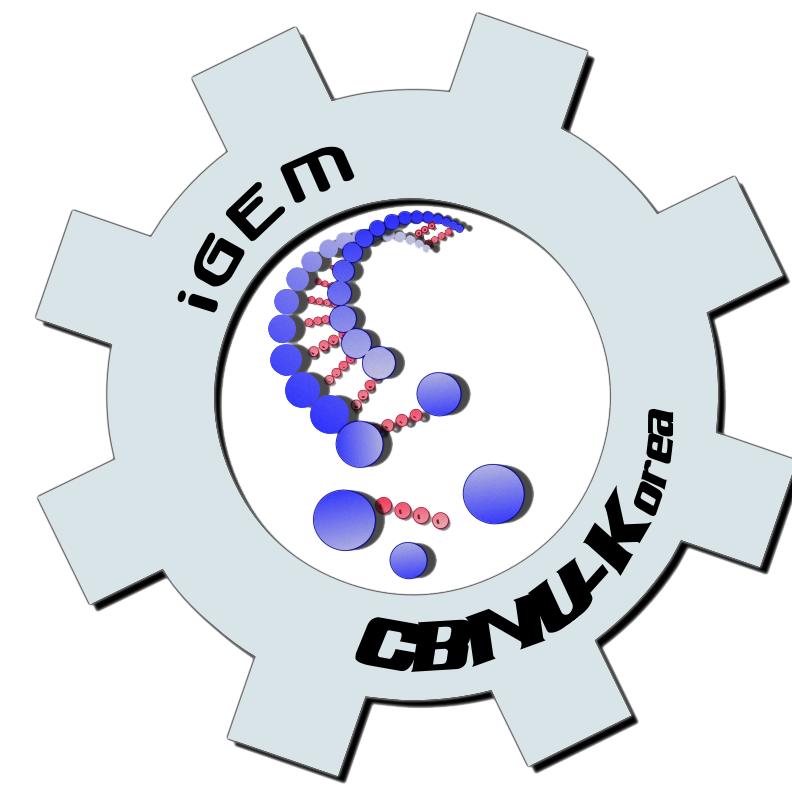Team:IIT Madras/Project
From 2009.igem.org
|
Synthetic biology is a new area of biological research that combines science and engineering in order to design and build ("synthesize") novel biological functions and systems. It involves plugging together existing genetic components in order to create new and unique systems. This application, titled the "Combinatorial Lock" introduces a new paradigm in gene regulation. The study is based on the concept of plasmid loss. Any episome introduced into the cell shows a segregational asymmetry accompanied with differential growth rates in the absence and presence of episome leading to an overall loss of the episomal unit in the absence of any maintaining selective pressure. It is hypothesized that by appropriately controlling the external selective pressures, we can thereby also control the direction of plasmid loss, modifying the existing gene regulation system in a pre determined manner. It is also hypothesized that introducing negative selective pressures against certain other directions of plasmid loss, in the form of constitutively repressed endotoxins will help streamline the regulatory system even further. If successful, this study allows for exquisitely delicate and precise multifactorial control of gene regulation in the future. It is expected that if successful, this model can be used to also hide genes of commercial interest to protect it from unauthorized use. | |
| Team Example 2 |
| Home | The Team | The Project | Parts Submitted to the Registry | Modeling | Notebook |
|---|
Contents |
Overall project
Our project is based on the fundamental concept of plasmid instability in a novel way to conceal information or ‘lock’ a gene’s function in a cell until the correct combination of inputs is fed into the cell. We call this a ‘combinatorial lock’. It involves the positive regulation of the gene of interest only on receiving the correct inputs from the user. We use plasmids which can confer resistance to certain antibiotics in the medium and link them up in a certain way (i.e, design a genetic circuit) so that they repress the expression of the gene of our interest. As the selection pressure is lifted from the media, the plasmids which have the repressors for the gene of interest are lost, hence revealing the gene on using the correct series of antibiotic washes. In essence, the process of unlocking would simply be the correct sequence of antibiotic media in which the cells should be washed. We would be working with both a 2 plasmid system as well as 3 plasmid system and it is easy to see that this principle, in theory, could be extended to n plasmids. We intend to demonstrate this with simulations in matlab. One can think of a number of potential applications of this system of ‘combinatorial locks’, an example being the field of medicine. Human body releases a myriad of chemicals everyday in a certain order according to external stimuli or otherwise. In case of a disease, if this order goes awry, then this lock can be used to release the required chemicals to bring back the desired equilibrium. Also, when one wants to have the expression of a gene of commercial interest available only to licensed users and not a third party, this lock could be used.
Theory
The most important idea behind the working of the lock is plasmid loss due to lack of selection. Any extra-chromosomal genetic material introduced into the cell tends to disappear over the generations, unless they confer a selective survival advantage over the cells that do not possess the plasmid. During the growth of bacteria, plasmid-free variants arise in the initially homogeneous plasmid-bearing cell population basically in two ways. First, each plasmid-bearing cell has a certain probability to give rise to a plasmid-free cell at cell division (this depends on the mechanisms of plasmid distribution between daughter cells, plasmid copy number at the cell division, the presence of multimer resolution loci, etc.). Usually, such probability is very low for natural plasmids (about 10-7) whereas recombinant plasmids (i.e. genetically modified) may segregate with a higher probability (10-3—10-5). Several hypotheses have been put forward to explain this tremendous difference: impaired copy number control, the absence/impairment of the multimer resolution genes and random distribution of plasmid among daughter cells for low copy number plasmids.
Second, it was experimentally found that plasmid-bearing cells usually have a lower maximum specific growth rate than their plasmid-free counterparts, and once a plasmid-free cell arises, it out-competes its plasmid-bearing counterparts very rapidly. Since most recombinant plasmids are not conjugative (not capable of self-transfer to other plasmid-free cells), if a cell has lost a plasmid, there is no way for the cell to acquire it again. Thus, a segregation of plasmids at cell division and the difference in the growth rates of plasmid-free and plasmid bearing subpopulations determine the rate at which plasmids are lost during prolonged cultivation. Here, we use plasmids which can confer resistance to certain antibiotics in the medium and link them up in a certain way so that they repress the expression of the gene of our interest. As the selection pressure is lifted from the media, the plasmids which have the repressors for the gene of interest are lost, hence revealing the gene on using the correct series of antibiotic washes.
 "
"

